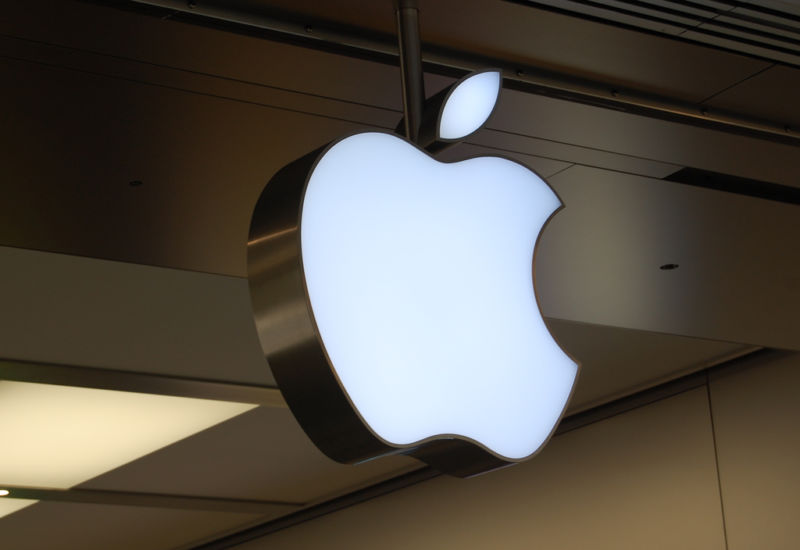
Today, Apple shared its fiscal second-quarter results with shareholders. After a tumultuous first quarter that saw CEO Tim Cook revise the company's guidance weeks before the earnings report was made public, investors and analysts were looking for Apple to divulge some good news—particularly surrounding iPhone sales, its services business, and the situation in China.
Apple somewhat delivered on those fronts, but overall, its Q2 2019 earnings report is a mixed bag. The company made $58 billion in revenue this quarter, which is on the higher end of its expected revenue spectrum ($55 to $59 billion), but down 5 percent year-over-year. iPhone sales made up $31 billion of that total amount, down from $37.5 billion during the same quarter in 2018.
Apple stock jumped over 4 percent after the earnings report was released, pushing the company close to a $1 trillion valuation.
Handling the iPhone’s decline
Generally, Apple's other product segments did well this quarter. iPad sales revenue saw an increase from $4 billion in Q2 2018 to $4.8 billion in Q2 2019. Apple's wearables, home, and accessories category also saw revenue gains: up from $3.9 billion in Q2 2018 to $5.1 billion this quarter.
Mac sales revenue saw a slight decline year-over-year. Cook attributed that decline to "processor constraints," but the CEO also said that these constraints should not have a long-term effect on Mac sales. But, as anticipated, Apple's services business hit an all-time high of $11.5 billion in revenue this quarter, up from $9.8 billion during the same period last year and up from Q1 2019's total revenue of $10.9 billion.
After years of detailing iPhone sales growth, Cook described this quarter's iPhone sales revenue decline as being "significantly smaller than last quarter." Cook noted that the most challenging months in recent memory for iPhone sales was November 2018 and December 2018, and the company's goal is to "pick up the pace" to accelerate iPhone sales in the future.
While users may be holding onto their iPhones for longer now, Apple cited the strong, positive response to its revamped trade-in and financing programs. After launching new programs in the US, China, UK, Spain, Italy, and Australia, Apple saw four times the trade-in volume than it did in March 2018. That means that customers are more likely to buy new iPhones if they can get some money back by handing over their existing handsets or if they can choose a financing option that works for them.
At the end of last year, Apple explained that it would not report iPhone unit sales per quarter, a decision that frustrated some but makes sense for Apple's bottom-line. Instead, the company disclosed on its Q1 2019 earnings call that its global install base includes 900 million iPhones—and today's earnings report shows that the company's install base is comprised of 1.4 billion devices. Rather than focusing on how many new iPhones it has sold, Apple wants to now focus on how many iPhones are out in the world to show how vast its services business could be.
Services and China
Apple is hoping its slew of new services will appeal to many iPhone users. At an event in March, the company announced Apple News+, a news and magazine subscription program; Apple Arcade, a gaming subscription service; and Apple TV+, a TV-streaming subscription program. The former of the three is already available for $10 per month, but the latter two will debut in the fall.
All of these new endeavors, along with Apple's existing services, represent a big part of the company's future. Cook described the "singularly exceptional experience" that Apple is trying to achieve with its devices and services. The company hopes that it can keep users in the Apple ecosystem by offering services that are similar to its hardware: easy-to-use, detail-orientated, and focused on privacy and security.
How Apple TV+ and Apple Arcade will be received is unclear, but Apple's existing services are already bolstering this effort. Currently, Apple has 390 million paid subscriptions across its entire services portfolio—up from 120 million paid subscriptions at this time last year, and up by 30 million since last quarter. Cook did not break down that subscriber number, but as of last quarter, Apple Music had 50 million paid subscribers.
On the topic of China, the country continues to present struggles for Apple as the company saw lower sales revenue than last year. This quarter, sales in Greater China produced $10.2 billion in revenue, down from Q2 2018's total revenue of $13 billion.
However, Apple's leadership remains optimistic about its efforts in China. Tim Cook cited again the popularity of Apple's new trade-in and financing options, which have been a big hit in China as well as other countries. Cook also explained that price adjustments to account for weaker currency have had a positive effect in the region, as well as stimulus programs created by local governments and the improved trade dialogue between the United States and China.
Many analysts probed Apple about its recent settlement with Qualcomm, in which the companies came to an agreement to dismiss all litigation after just one day in court. The agreement resulted in a multi-year supply and licensing deal in which Apple will continue to use Qualcomm's chips in its devices. Cook didn't provide any more details about the settlement, only saying that the company is "glad to put the litigation behind us."
reader comments
264